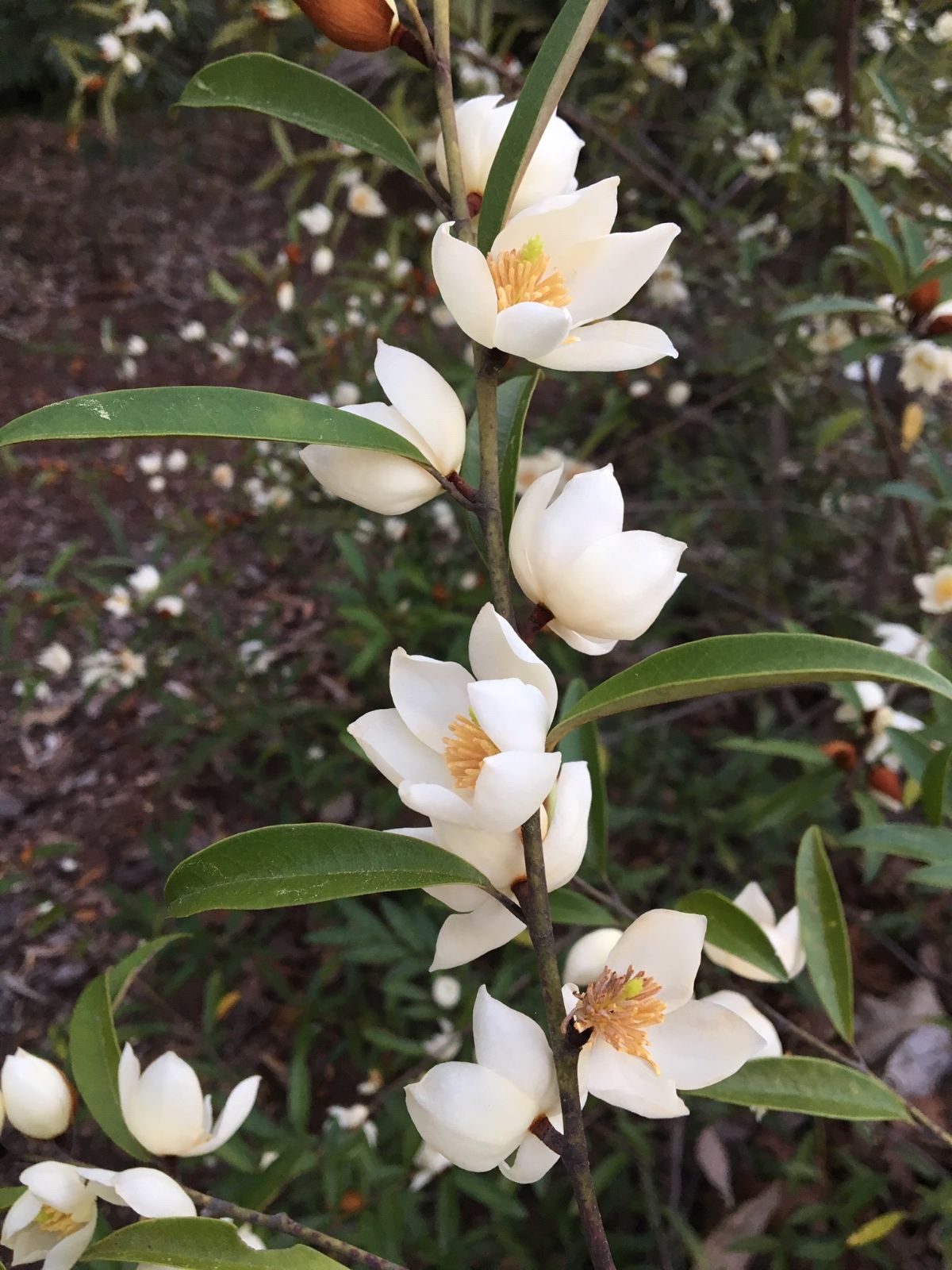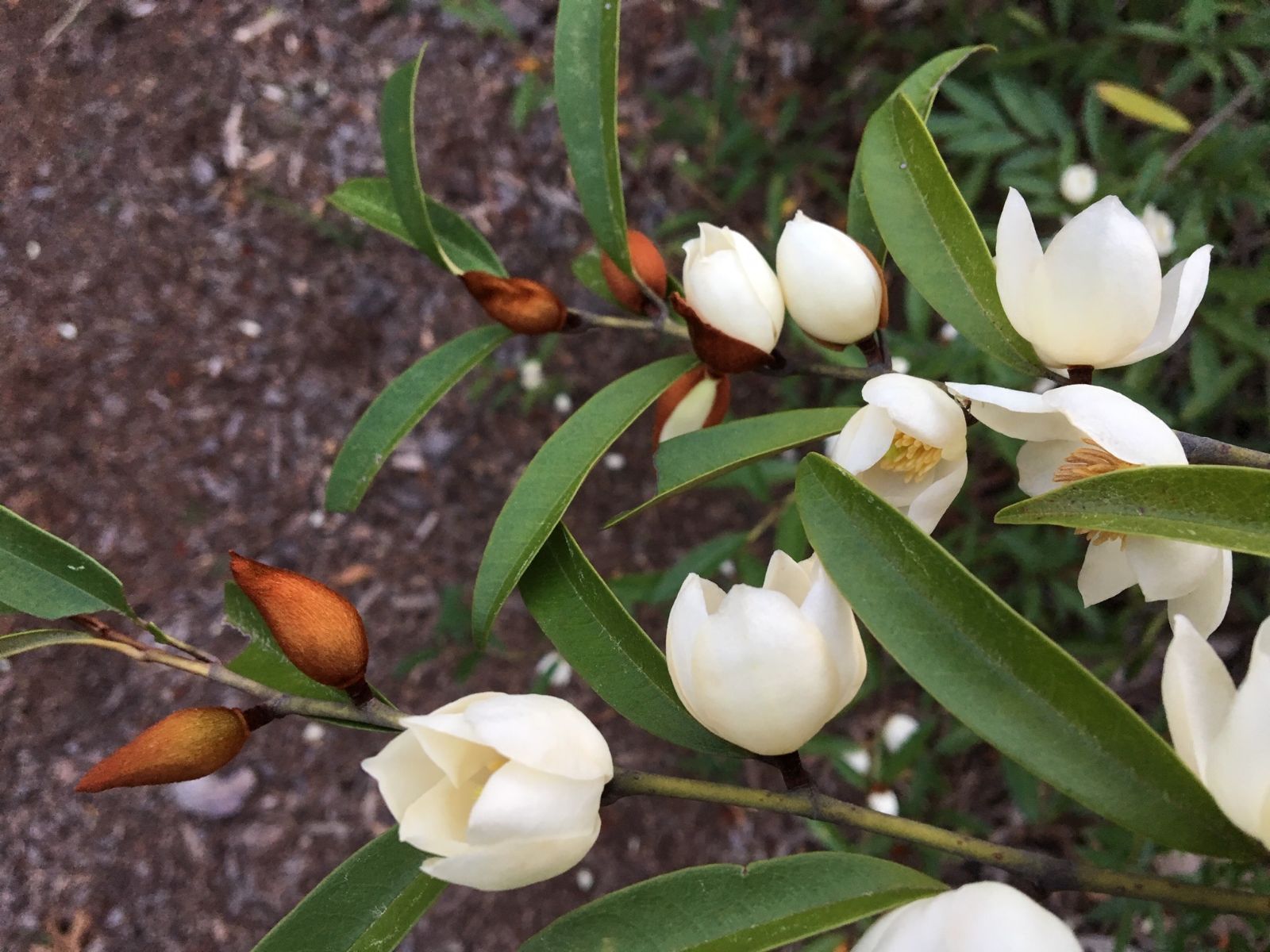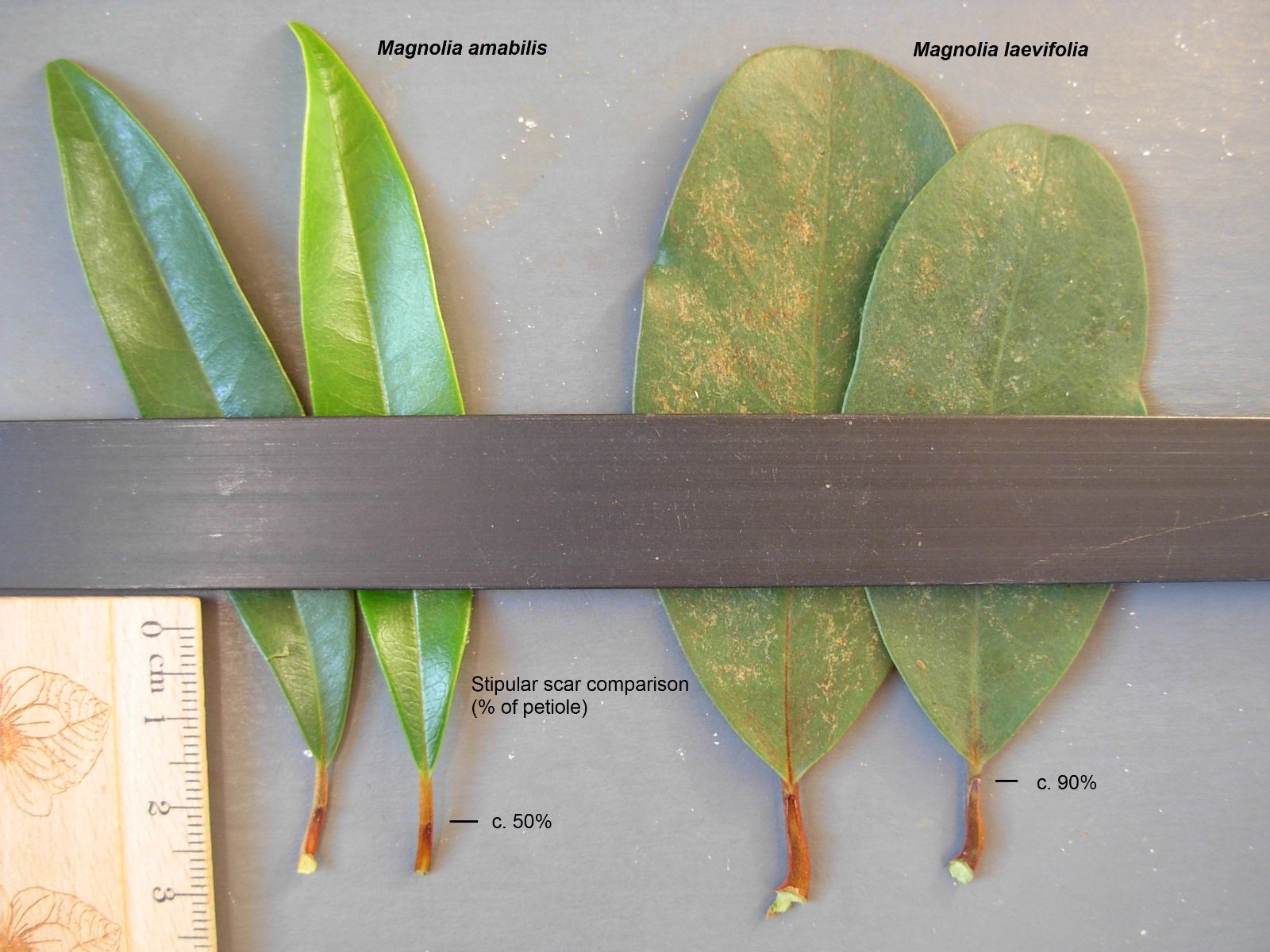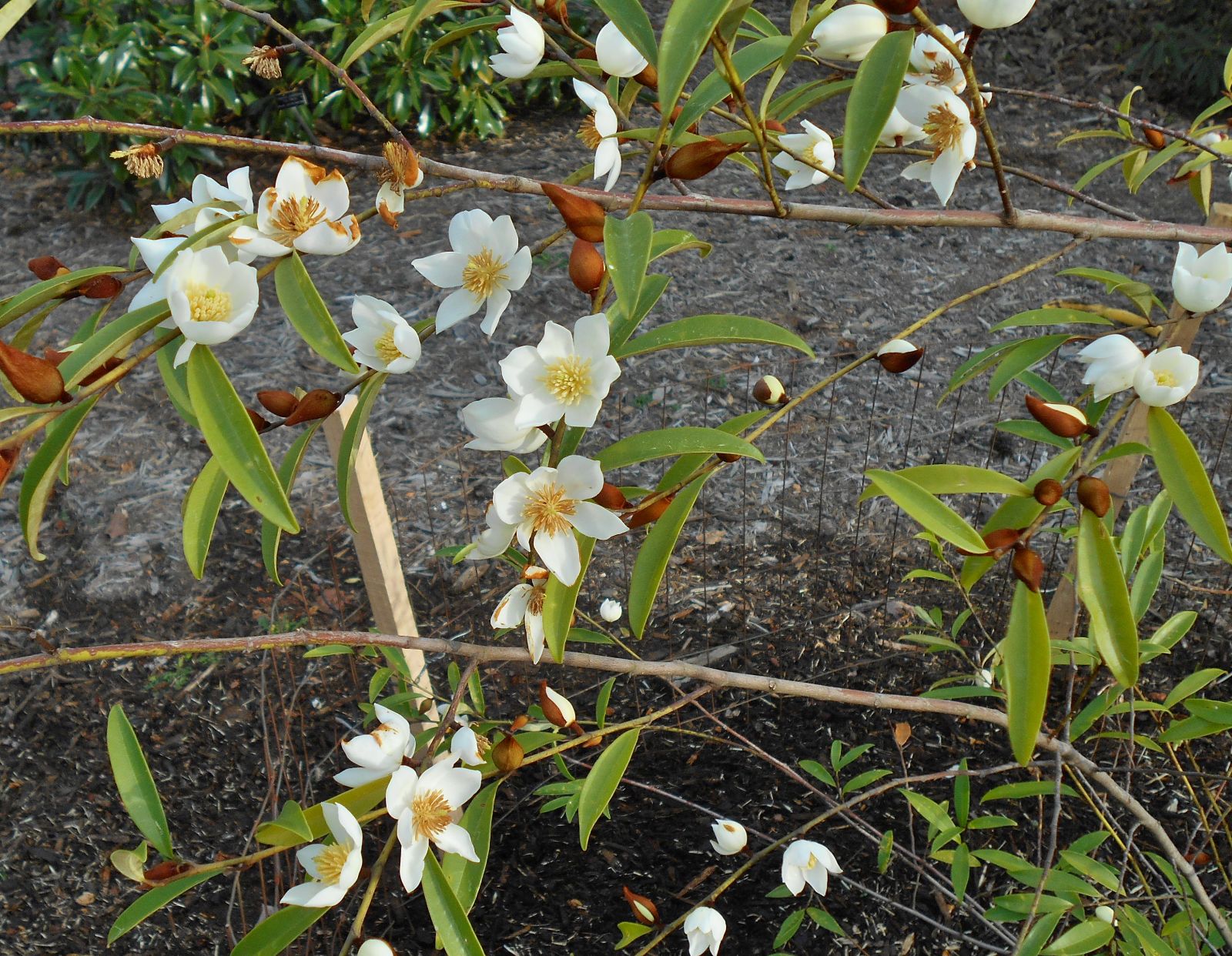Magnolia amabilis
Sponsor
Kindly sponsored by
The Roy Overland Charitable Trust

Credits
Richard B. Figlar & Julian Sutton (2022)
Recommended citation
Figlar, R.B. & Sutton, J. (2022), 'Magnolia amabilis' from the website Trees and Shrubs Online (treesandshrubsonline.
Genus
- Magnolia
- Section Michelia
Common Names
- Dujuan
Synonyms
- Michelia amabilis (Sima & Y.H. Wang) Y.M. Shui
Other taxa in genus
- Magnolia acuminata
- Magnolia × alba
- Magnolia amoena
- Magnolia aromatica
- Magnolia biondii
- Magnolia × brooklynensis
- Magnolia campbellii
- Magnolia cathcartii
- Magnolia cavaleriei
- Magnolia caveana
- Magnolia champaca
- Magnolia changhungtana
- Magnolia chapensis
- Magnolia compressa
- Magnolia conifera
- Magnolia Cultivars A
- Magnolia Cultivars B
- Magnolia Cultivars C
- Magnolia Cultivars D
- Magnolia Cultivars E
- Magnolia Cultivars F
- Magnolia Cultivars G
- Magnolia Cultivars H–I
- Magnolia Cultivars J
- Magnolia Cultivars K
- Magnolia Cultivars L
- Magnolia Cultivars M
- Magnolia Cultivars N–O
- Magnolia Cultivars P
- Magnolia Cultivars Q–R
- Magnolia Cultivars S
- Magnolia Cultivars T
- Magnolia Cultivars U–V
- Magnolia Cultivars W–Z
- Magnolia cylindrica
- Magnolia dandyi
- Magnolia dawsoniana
- Magnolia de Vos and Kosar hybrids
- Magnolia decidua
- Magnolia delavayi
- Magnolia denudata
- Magnolia doltsopa
- Magnolia duclouxii
- Magnolia ernestii
- Magnolia figo
- Magnolia floribunda
- Magnolia × foggii
- Magnolia fordiana
- Magnolia foveolata
- Magnolia fraseri
- Magnolia fulva
- Magnolia globosa
- Magnolia × gotoburgensis
- Magnolia grandiflora
- Magnolia grandis
- Magnolia Gresham hybrids
- Magnolia guangdongensis
- Magnolia hookeri
- Magnolia insignis
- Magnolia Jury hybrids
- Magnolia × kewensis
- Magnolia kobus
- Magnolia kwangtungensis
- Magnolia laevifolia
- Magnolia lanuginosa
- Magnolia leveilleana
- Magnolia liliiflora
- Magnolia × loebneri
- Magnolia lotungensis
- Magnolia macclurei
- Magnolia macrophylla
- Magnolia martini
- Magnolia maudiae
- Magnolia nitida
- Magnolia obovata
- Magnolia officinalis
- Magnolia opipara
- Magnolia × proctoriana
- Magnolia × pruhoniciana
- Magnolia rostrata
- Magnolia salicifolia
- Magnolia sapaensis
- Magnolia sargentiana
- Magnolia sieboldii
- Magnolia sinensis
- Magnolia sinica
- Magnolia sinostellata
- Magnolia × soulangeana
- Magnolia sprengeri
- Magnolia stellata
- Magnolia tamaulipana
- Magnolia × thomsoniana
- Magnolia tripetala
- Magnolia × veitchii
- Magnolia virginiana
- Magnolia × wieseneri
- Magnolia wilsonii
- Magnolia xinganensis
- Magnolia yunnanensis
- Magnolia yuyuanensis
- Magnolia zenii
Evergreen shrub to 4m. Bark smooth, grey. Branchlets initially green, ~2 mm diameter, becoming grey and glabrous later. Young shoots, buds, stipules, petioles and peduncles covered with short tawny or rufous pubescence. Leaf blade coriaceous, narrowly oblanceolate to narrowly elliptic, 5–9 × 1–2 cm, with 13–17 secondary veins on each side of the midrib; apex sharply acute to acuminate; base cuneate; upper surface dark green and glabrous; lower surface pale green to glaucous, sometimes with sparse tawny pubescence or becoming glabrous; reticulation distinct both sides. Petioles 4–10 mm long; stipule scars extending to 40–50% the length of the petiole. Flowers on short axillary shoots (brachyblasts), sweetly scented; peduncle 5–8 mm long, usually with 2 internodes. Tepals 6–8, white to creamy white, 1.5–3 × 0.5–2.0 cm, narrowly to broadly obovate, apex acute to cuspidate; stamens numerous, creamy-white, 0.9–1.2 cm long, remaining persistent to the androphore through male-phase; gynophore 5–7 mm long, with short tawny pubescence; carpels 10 to 19, ovoid, 1– 2 mm long, each with 2–6 ovules; styles ~2 mm long; ovules 2 to 6. Fruits usually remaining green until dehiscence, 2.7–6.9 cm long; mature carpels 1–10, glabrous, ovoid to ellipsoid, 8–16 × 7–11 mm. Seeds with red-orange sarcotesta; testa dark brown, smooth. Flowering March–April, fruiting (July–) August–September (SE USA). Diploid 2n=38. (Sima et al. 2006).
Distribution China SE Yunnan (Gejiu County)
Habitat Subtropical forest and thickets, 1700–2100 m.
USDA Hardiness Zone 8-9
RHS Hardiness Rating H4
Conservation status Not evaluated (NE)
Taxonomic note This rather recently described species (Sima et al. 2006) has not yet been widely accepted as distinct from Magnolia laevifolia (not accepted by Flora of China (Xia, Liu & Nooteboom 2008), Plants of the World Online (Royal Botanic Gardens, Kew 2022), Magnolia Society International (Figlar 2012)). We include it here on the more recent advice of Richard Figlar (pers. comm. 2021) who has personal experience of the living plant.
Magnolia amabilis is a shrubby member of Section Michelia with fragrant flowers and willow-like leaves, whose provenance suggests that it might prove hardy in milder parts of our area. On this basis of these facts alone it deserves trial in gardens and should attract the attention of plant breeders, whether or not it is regarded as a species in its own right or merely a distinctive local form of M. laevifolia.
It is distinguished from M. laevifolia as follows (Sima et al. 2006): stipular scar 40–50% of the length of the petiole (versus nearly 100%), narrower leaves with 13–17 pairs of secondary veins (versus shorter, broader leaves with 7–9 pairs), and tepals with acute to cuspidate apices (versus mostly obtuse to rounded apices).
First introduction to Western cultivation was to the JC Raulston Arboretum of North Carolina State University in 2011, from Shibamichi Honten Nursery in Japan, incorrectly labelled Magnolia angustioblonga (Y. W. Law & Y. F. Wu) Figlar (this is another shrubby michelia, but lacking a stipular scar, from Guizhou, and not covered here). Four years later, after receiving one of these plants from the Mountain Horticulture Crops Research Center of NCSU, Richard Figlar noticed that it closely matched Yong-Kang Sima’s new species M. amabilis. Detailed images were sent to Sima, who confirmed its identity (Weathington 2019a, 2019b; R. Figlar pers. comm. 2021).
At Figlar’s Magnolian Grove Arboretum, western South Carolina (USDA zone 8), this species performs very much like Magnolia laevifolia in the landscape. Since plants have experienced some branch die-back from exposure to temperatures of –13°C or lower, it appears to be more tender than M. laevifolia (USDA Zone 7a). Thus, we provisionally rate its cold-hardiness at USDA zone 8. As of 2021 it was growing at JC Raulston Arboretum, where it has suffered no damage through 200 consecutive hours of freezing (Weathington 2019); and outside our area at Atlanta Botanical Garden, Georgia.






